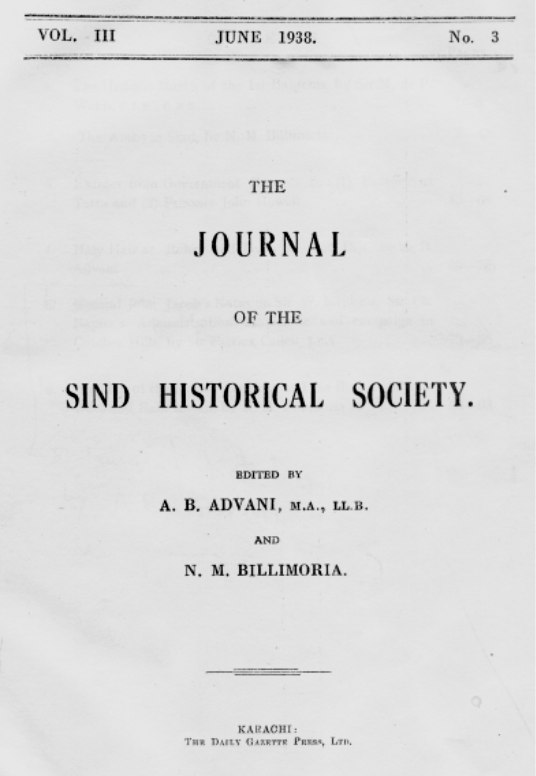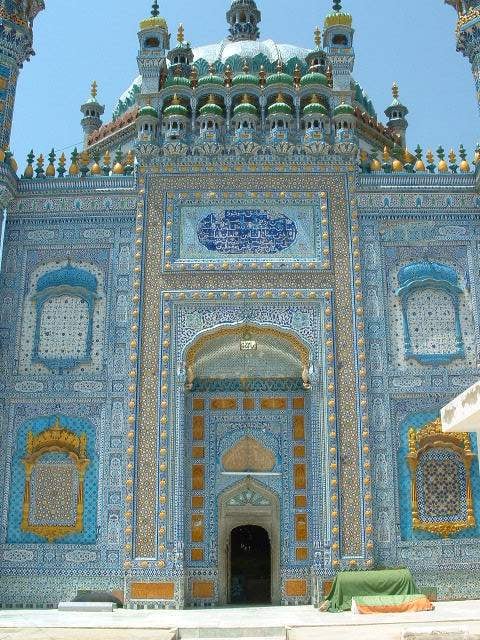By Jan Khaskheli
Sitting at his workshop, Nadir Wighio, a master woodblock maker is one of the few artisans of Sindh who is making carving blocks for block printing of Sindh’s Ajrak. Working with his three young cousins, Wighio supplies wooden blocks to the entire Ajrak-making workshops across Sindh. All the 70 Sindhi shawl-making workshops mostly depend on his woodblocks as there is no other such artisan left.
This workshop of a few craftsmen is famous for block-making, originally belonging to Saeedi Mosani Village near Mehar Town in Dadu district. They migrated some about 30 years ago and settled in Bhitshah’s artisans’ colony in the Matiari district. The colony was constructed adjacent to the tomb of the famous Sindhi poet Hazrat Shah Abdul Latif Bhitai.
“Except for my family members, there are no such skilled craftsmen, who can do such work,” said Wighio proudly adding that they are the last progeny of the Ajrak-printing woodblock makers in Pakistan. For generations, these craftsmen have been working from dawn to dusk every day to carve out elaborated patterns on the wooden blocks. Each one of them usually takes a week or two to make a new set of 5-7 blocks separately to earn a livelihood that hardly helps him make ends meet for his family, Nadir Wighio said.
According to these artisans, they end their work as the sun sets in the west because they avoid working in the dark because they fear that the bright light of electric bulbs may harm their eyesight. “This is a work that relies on your eyesight even in the daylight as it demands pinpoint concentration. So you have to save your eyes for tomorrow to survive,” he says
Nadir was born and schooled in the village Saeedi Mosani in Dadu District, but he discontinued education after finishing his primary classes. Recalling, Nadir said, he had just passed the fifth- grade when his father, the only breadwinner of his family, died.
After this tragedy, his maternal uncle Ustad Wali Muhammad Wighio, an experienced woodblock-making legend adopted him and took him under his pupilage. Nadir Wighio devoted himself to the art of woodblock making and after four years of hard work under the eagle eye of his uncle, he himself became a master of the trade.
“It was the beginning; my true mastery took at least 10 long years of work to come. It needs passion and a continuous effort to learn. We are ready to transfer this skill to others to save the traditional industry, which engages hundreds of artisans now,” he said proudly.
“New designs are emerging in the market and they have to switch hands as per need. Presently, it is a challenge because these artisans do not have an option other than our family to produce these items. We had never expected such an overwhelming demand for woodblocks.”
Despite his meagre education, Nadir is likely blessed with an eidetic or photographic memory. He claims to have been able to memorise every intricate detail of the patterns only after looking at them once and can reproduce the exact copy on a piece of wood with his simple iron tools. The immensity of his works can be approximated by the fact that he can’t even reckon how many blocks with how many designs he has made in his life.
“Besides the art designs, I can design a variety of flowers, stars, moon, and sun along with every symbol used in Ajrak printing like common birds, pigeons, peacocks, sparrows; animals like goat, cow, camel, elephants, horse; reptiles like a cobra, crocodiles etc. It is up to the client’s choose. I can only make one block in two days after working eight hours a day.”
They work manually with traditional tools to make the holes, patterns, and designs as per the market demand. They do not use electric drills or other common machinery used in carpentry. For this, they justify that it is care-intensive work, which can only be done with the help of these tools. That is why nobody can replicate these blocks through original work.
Nadir buys wooden blocks from the local market. Before sharpening/smoothening them, he cuts the woodblocks to the right measure. “We can easily spot any defects in the raw wood. Our valued clients do not accept any defects, thus we have to be careful. This is the only way trust is built, and we do all that it takes to make our work transparent,” he said.
“Once I was given photographs of 50 males and females at a private institution in Karachi. I was told these images will be made into woodblock designs. It took me six months to carve those human portraits. I was showered with praise after accomplishing that feat. Since then, I have designed logos, symbols, and maps for many other institutions.”
There is a serious need for a new breed of master artisans to save this cultural identity of Sindh. Nadir said some young men did come to him for training, but only a couple or more learned a little and are now trying to continue this art at two workshops in Bhitshah.
“It is going to take years before they can master this rare art,” Nadir said.
Shakeel Abro, Director of Sindh Indigenous & Traditional Crafts Company (Sitco) said they have taken the initiative to provide skill training to young artisans at Bhitshah to save the craft of wooden block makers. But it seems only a few persons, including two youths from Qasur, Punjab have shown interest in learning it.
They have adopted this skill and working on this. But they have yet to refine the quality and origins, required in the Ajrak industry here in Sindh. Only Nadir Wighio has maintained the original quality of this work, making wooden blocks in Bhitshah, the hub of the Ajrak industry of the province, he added.
About Author



